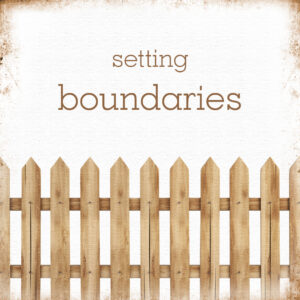Setting boundaries can be particularly important for a women with ADHD (Attention-Deficit/Hyperactivity Disorder) as it helps create structure and predictability in their lives. Here are some strategies to help women with ADHD set and maintain boundaries effectively:
Understand Your Needs
Self-Reflection: Take time to identify what boundaries are necessary for your well-being. Consider areas like time management, social interactions, and work commitments.
Prioritize: Determine which boundaries are most critical for you and focus on these first.
Be Clear and Specific
Define Boundaries Clearly: Articulate what your boundaries are. For example, if you need alone time, express that you need “30 minutes of quiet time after work” instead of saying “I need some space.”
Use “I” Statements: Frame your boundaries in personal terms, like “I feel overwhelmed when…”
Communicate Openly
Talk About Boundaries: Discuss your boundaries with friends, family, and coworkers. Let them know how they can support you in maintaining these boundaries.
Regular Check-Ins: Have periodic discussions to assess how well boundaries are working and make adjustments if needed.
Practice Saying No
Learn to Say No: Understand that it’s okay to decline requests or invitations that infringe on your boundaries. Practice responses that feel comfortable for you.
Offer Alternatives: If you need to say no to something, suggest a different time or way to connect that aligns more with your boundaries.
Use Tools and Reminders
Visual Aids: Use calendars, planners, or apps to visually mark your boundaries and commitments.
Set Alarms: Use phone alarms or reminders to help you stick to your boundaries, such as when it’s time to stop working or take breaks.
Create Physical Boundaries
Designated Spaces: If possible, create a designated workspace or quiet area where you can retreat when you need to focus or recharge.
Limit Distractions: Reduce environmental distractions that might lead you to drift from your boundaries, such as turning off notifications.
Be Persistent and Consistent
Reinforce Your Boundaries: It may take time for others to adjust to your boundaries. Be consistent in enforcing them.
Address Boundary Crossings: If someone crosses your boundary, calmly remind them of the boundary you established and why it’s important to you.
Seek Support if Needed
Therapy or Coaching: Consider seeking help from a mental health professional or ADHD coach who can provide tailored strategies for boundary setting.
Support Groups: Join support groups or forums for individuals with ADHD where you can share experiences and strategies.
Practice Self-Compassion
Be Kind to Yourself: Recognize that boundary setting is a skill that takes time to develop. Don’t be too hard on yourself if you find it challenging at first.
Acknowledge Progress: Celebrate small victories in setting and maintaining boundaries.
By setting and maintaining boundaries, a women with ADHD can create an environment that supports their needs, promotes well-being, and enhances their ability to focus and function effectively.
